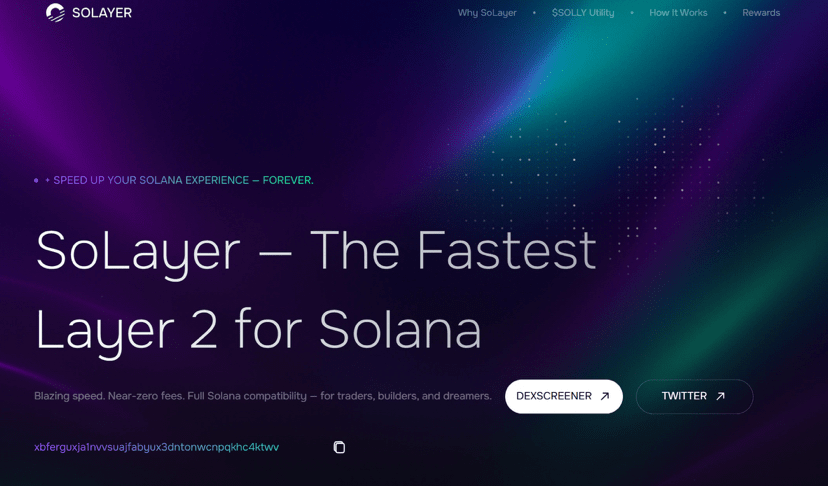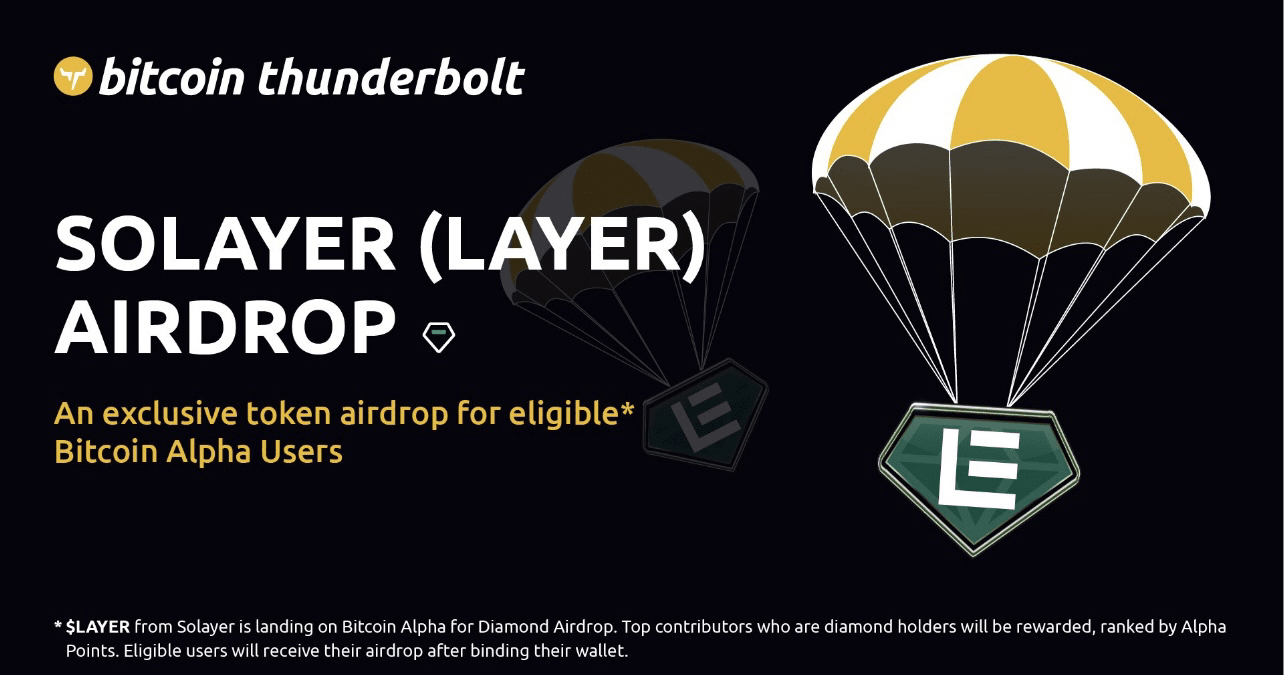In the fierce competition in the blockchain field, Solayer stands out and is rapidly becoming a focal project in the industry. Its unique design concept and strong technical strength bring new vitality and transformation to the blockchain ecosystem.
What is Solayer?
Solayer is a hardware-accelerated blockchain network designed for high throughput and near-zero latency, with a theoretical TPS speed of up to 1 million. This project advocates that the next generation of blockchain scaling technology is driven by horizontal scaling and hardware offloading.
Solayer relies on InfiniBand technology, Software Defined Networking (SDN), Remote Direct Memory Access (RDMA), and a multi-executor model, with the core goal of extending the Solana Virtual Machine (SVM) while providing stronger capabilities to protect block space and optimize transaction priorities.

Solayer team members:
Rachel Chu: Co-founder, former core developer at SushiSwap, CEO of NFT project Vibe.
Jason Li: Background in computer science from Berkeley, founder of MPCVault.
Solayer financing situation:
In May 2024, Solayer raised $8 million in a seed round at a valuation of $80 million, with investors including Solana co-founder Anatoly Yakovenko and Polygon co-founder Sandeep Nailwal.
On August 28, 2024, Solayer completed a $12 million seed round of financing led by Polychain Capital, with other investors including Big Brain Holdings, Hack VC, Nomad Capital, Race Capital, ABCDE, and Arthur Hayes' family office Maelstrom.
Solayer economic model and token situation:
Total supply: 1 billion LAYER tokens, with an initial circulation of 22% (220 million tokens).
Distribution ratio: Community and ecosystem 51.23%, core team 17.11%, investors 16.66%, foundation 15%.
Unlocking risk: A large unlock for the core team and investors (12.74%) is expected in January 2026.

Core technology of Solayer:
1. RDMA and InfiniBand technology
Remote Direct Memory Access (RDMA): Bypasses traditional protocol stacks via dedicated network interface cards (RNICs) to achieve zero-copy data transfer, with end-to-end latency below 1 microsecond, significantly reducing CPU overhead.
InfiniBand: As a high-performance implementation of RDMA, it supports single-port 100Gbps bandwidth and sub-microsecond latency, widely used in AI and high-performance computing fields, providing hardware-level acceleration for blockchain transaction processing.
2. Software Defined Networking (SDN)
Adopting a three-layer architecture that separates control plane and data plane, it achieves complex functions such as load balancing and traffic engineering through programmable forwarding devices, while maintaining line-speed performance.
3. Sharded database and parallel scheduling
The shard mechanism based on key-value storage breaks the account size limit of Solana, achieving sub-microsecond data access across nodes combined with RDMA.
Transaction scheduling constructs conflict-free parallel execution schemes by analyzing account read-write sequences, optimizing lock contention using greedy algorithms to ensure consistency.

In the fiercely competitive blockchain project rankings, Solayer has achieved leading positions in several important metrics due to its outstanding technical strength and innovative business model. In terms of performance, Solayer has achieved a network bandwidth of up to 100 Gbps and a processing capacity of 1 million TPS through its unique hardware-accelerated SVM (Infinis VM), far surpassing many similar projects and consistently ranking at the top in performance charts.
In terms of security, Solayer utilizes Solana's Proof of Stake (PoS) and Proof of History (PoH) consensus mechanisms, combined with re-staking technology, to build a highly secure network environment, also performing well on security rankings.
In addition, Solayer has achieved remarkable results in community activity and developer ecosystem, attracting active participation from numerous users and developers, and continuously climbing the comprehensive strength rankings.
Future outlook:
The emergence of Solayer brings new ideas and solutions to the blockchain industry. Whether from the perspective of technological innovation, application scenario expansion, or market influence, Solayer demonstrates tremendous potential. With its launch on Binance and the continuous improvement of its ecosystem, Solayer is expected to occupy a more important position in the future blockchain market and lead the industry into a new development phase.





